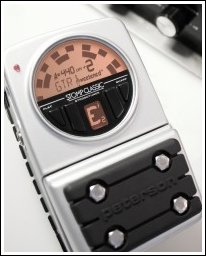Acoustic Blues Guitar - How To Change Guitar Strings
Video Showing How To Change Your Acoustic Guitar Strings The Martin way
Acoustic Blues Guitar - The Right Way to Change Your Strings
It's very true that the most effective things and processes are the most simple, and changing strings is no exception. New guitarists tend to have a running battle with their strings, bot loving and hating them at the same time! It's important to respect them and pass on to worrying about playing and not guitar technical issues.
 First off, we tended to wrap those strings on any old how, as we were more
interested in playing the guitar - often as beginners we tend to pass over how
great strings and their up-keep are so important to our overall performances.
It's not unusual to see guitar with big lengths of wire hanging off the tuning
headstock, and wrapped in great bundles around the turrets!
First off, we tended to wrap those strings on any old how, as we were more
interested in playing the guitar - often as beginners we tend to pass over how
great strings and their up-keep are so important to our overall performances.
It's not unusual to see guitar with big lengths of wire hanging off the tuning
headstock, and wrapped in great bundles around the turrets!Over wrapping is the first sin we commit. One of the first things we encounter as a new guitarist is the infuriating tendency of the strings to go out of tune. In the dim recesses of our newbie musical mind we think that the friction we associate with more wraps will keep the thing in tune, but it's just not like that. Sure it will improve on it, but it needs more than friction to keep tune.
Change Your Strings The Right Way For Confident Playing
The video above shows how a Martin guitar technician does it, which is by passing the spare end of the string under the strung part, over the string again by bending it around itself. When the tuning peg is turned, as the string tightens it traps the spare end underneath it and locks it in place. Economical and efficient - superb!It just remains to bring it up to standard tuning tension and snip off the excess. It look really nice and it's the right thing to do for your acoustic guitar. As the method effectively locks the string against itself, it's not necessary to have many wraps around the tuning turret - there is no benefit as the lock is doing the job of stopping the string from slipping.
Is it as simple as that? Well, yes it is. If you use the peg turner shown in the video, basically you can change your strings in 5 minutes, but I have some other tips for you. Personally, I don't like to play on new strings until they've been fitted for 24 hours. Here's is what I do ...
Fit the strings as shown in the video above and bring up to standard tuning. Starting with the bass E, gently but firmly pull the strings away from the sound board and bring back up to tune. Do this several times working from the basses to the high strings and leave overnight. In the morning, give them a final stretch and tune and you are good to go.
Tuning Your Guitar After A String Change

For years I just tuned the D string with a common or garden LED type tuner, and then tuned the others to it using any of the recommended methods, but as my hearing deteriorated with age I want do such a good job of it. Nowadays I use a strobe tuner.
Incredibly, when I inquired locally at some big guitar stores, the technicians had never heard of them! I'm not sure of the technical aspects, but suffice to say that they are much more accurate than the standard l.e.d. type tuner and just as easy to use.
Now the choice of guitar strings is huge -
we can choose from lights, mediums and heavy with a variety of nuances and shades! OK, you've chosen the kind of string , now which make should we try? It's no good specifying generically 'light gauge bronze wound', as these will always have differences between makers. I'm afraid there's not much else for it but to explore and try everything yourself. It isn't much good going for super lights because you guitar hero prefers them, only to find that your style is much too heavy and you need thicker strings.
Blues finger pickers generally prefer a light gauge string with a crisp response, such as Martin light gauge bronze 80/20 or phosphor bronze, while flat guitar pickers tend towards medium gauge. Whatever you go for, you can't go far wrong with Martin guitar strings. Even compared to 30 years ago, there's a huge variety available, ranging from the standard bronze 80/20 with an average life, and super-duper long life guitar strings.
A good compromise is their SP series, which I think stands for 'Studio Play', or something like that. The unwound strings are not silver, but have a coating and tend to last longer while delivering good tone.
When To Change Your Guitar Strings?
In my youth I played with steel finger picks almost exclusively and they really tore up the strings. I often found myself changing them every week or even less, if I was playing somewhere special. (Most of the time I played on the street.) Even at that time (1970s) it was quite expensive, but I couldn't see a way around it.
Nowadays I use my bare fingers lot more, and so the situation isn't so bad - a set of Martin light gauge SP will last me up to 4 weeks before the G string starts to feel dull and lifeless. it's always the G string, and it's worth while considering keeping a stock of these, changing just that string before the rest - saves a bit of cash!
Some companies like StringThis.com sell Martin strings in bulk (even SPs) and they come delivered without packing - a great saver.
